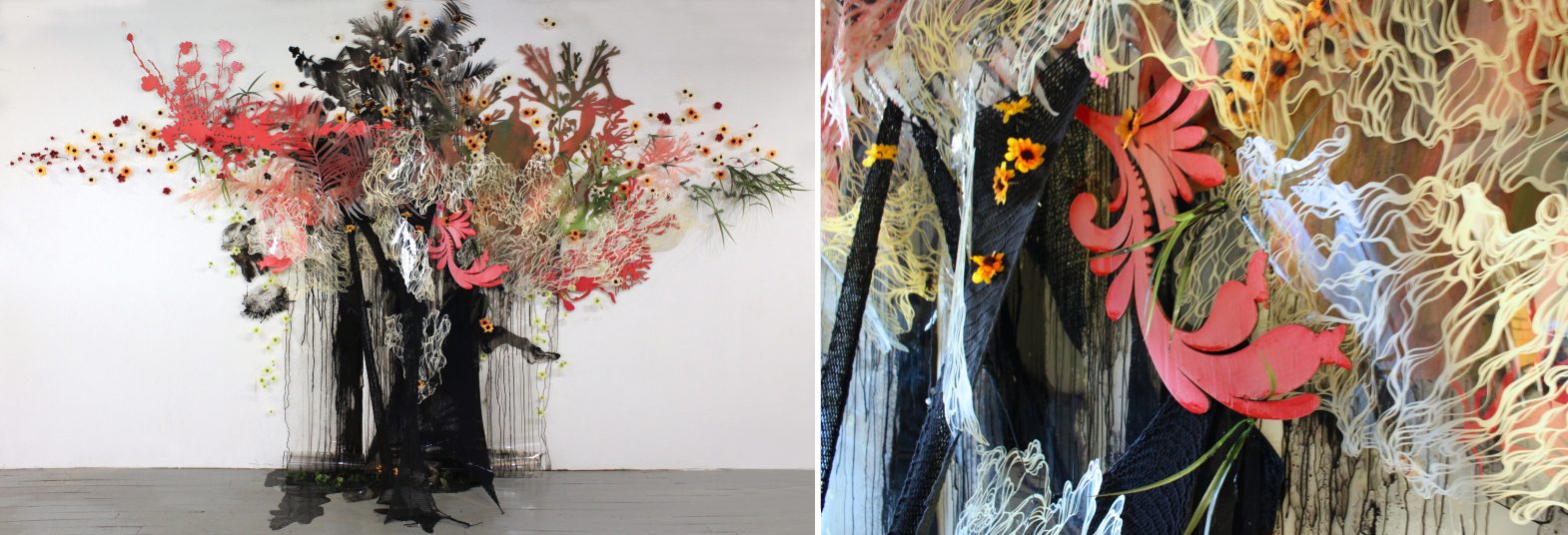
September 15, 2016 – April 29, 2016
Boston-based environmental artist Resa Blatman will install a 25-foot, site-specific work at the MAS using a variety of media: oil and glitter on laser-cut Mylar, PVC, and PETG; oil and latex paint on hand-cut Mylar; plus silk and plastic flora. The installation planned is part of a larger series of work entitled “Gaia,” which address environmental issues of changing climate, shifting landscape, species transformation, and new weather patterns.
Artist statement
Various depictions of nature is an ongoing focus in my work. My current paintings and installations speak to a warming planet, invasive plant and animal species, plastics, and environmental transformations and their effect on our landscape and natural resources. To reflect this concept visually, the artworks’ subjects and surfaces are heavily layered and sometimes the surfaces are split apart, with laser-cut forms that mimic tree branches, coral, and flora. This creates a physicality and metaphorical sound like the poetic violence of an iceberg cracking. As we become even more aware of the precarious nature of our habitat, this work speaks to the vulnerability of the earth that we so easily take for granted.
The cut-edge paintings and installations are made on ⅛-¼-inch panels and/or Mylar sheeting. I design the patterns on the computer and then have the panels and sheets professionally laser-cut. Back in the studio, I layer the pieces on top of one another, sometimes cutting them up and making smaller sections, to create one whole artwork. When the surface format is complete, I begin the painting process. The cut edges, layered surfaces, and shadows expand the subject matter of the paintings and help to conceive a beauty that is both chaotic and dystopian.
I also make paintings on traditional wood surfaces, both rectangular and oval.
“Resa Blatman’s fractured and layered relief paintings are suggestive of landscapes in flux. Her relationship to the first-hand observation of these glacial landscapes is heavily mediated, like most people’s relationship to the environment. Blatman’s quintessentially post-modern paintings are montages of altered, appropriated photographs representing narrative time as layered. They seem both timeless and apocalyptic. These beautiful yet ominous paintings offer both a premonition and a requiem for a fragile environment — a melancholic sublime.”
— Amy Schlegel, Director of the Galleries and Collections, Tufts University Arts Center
